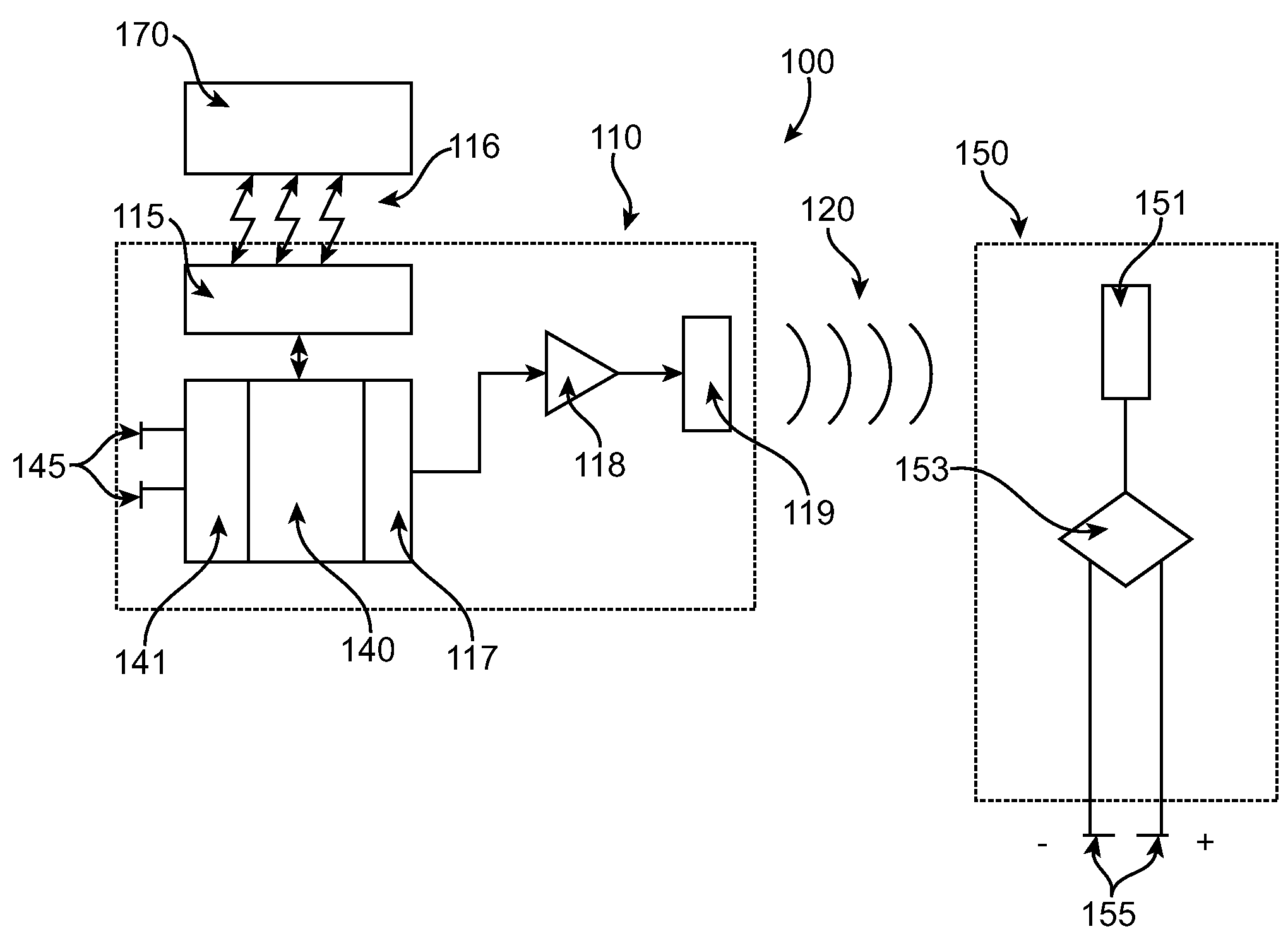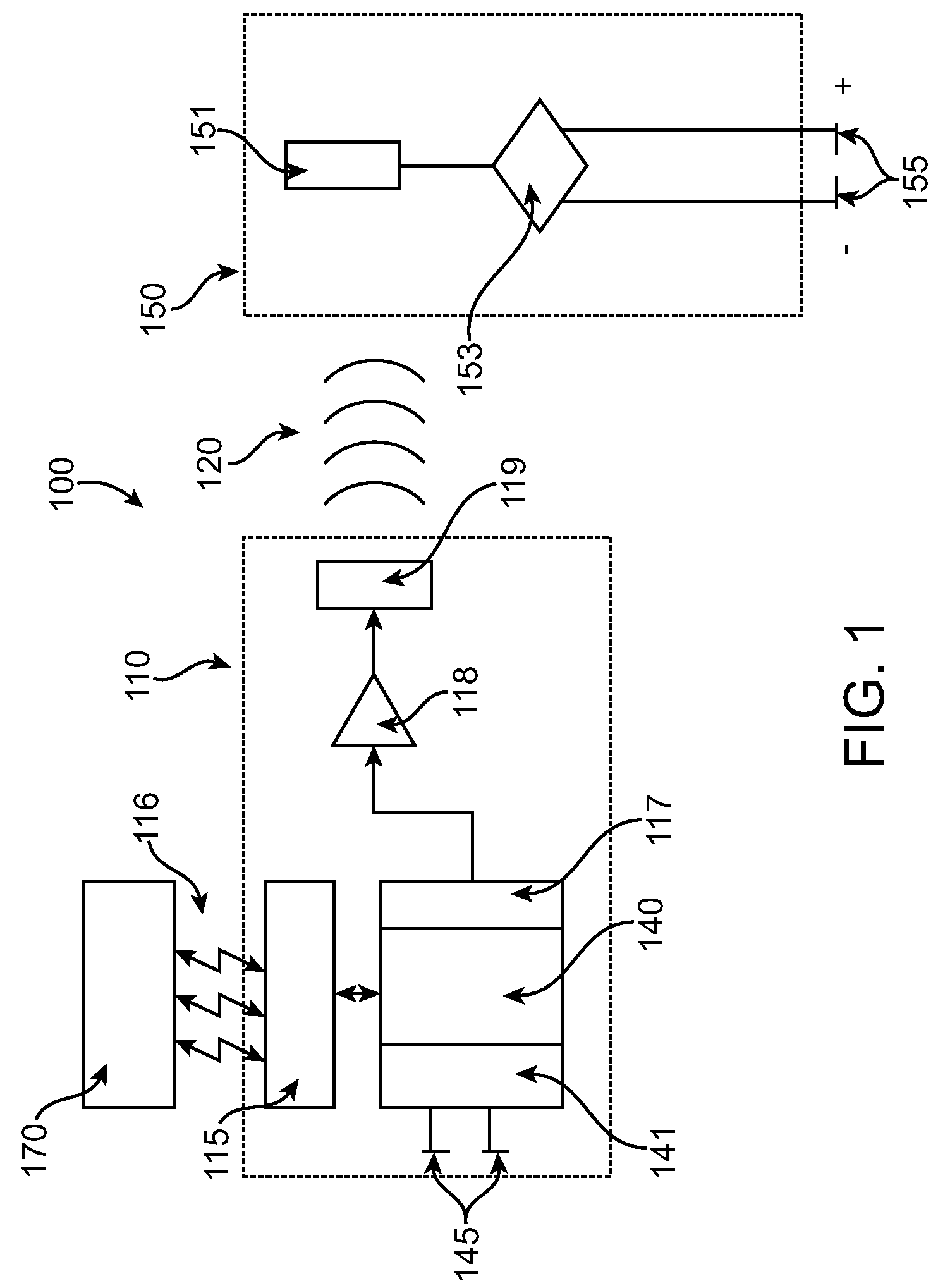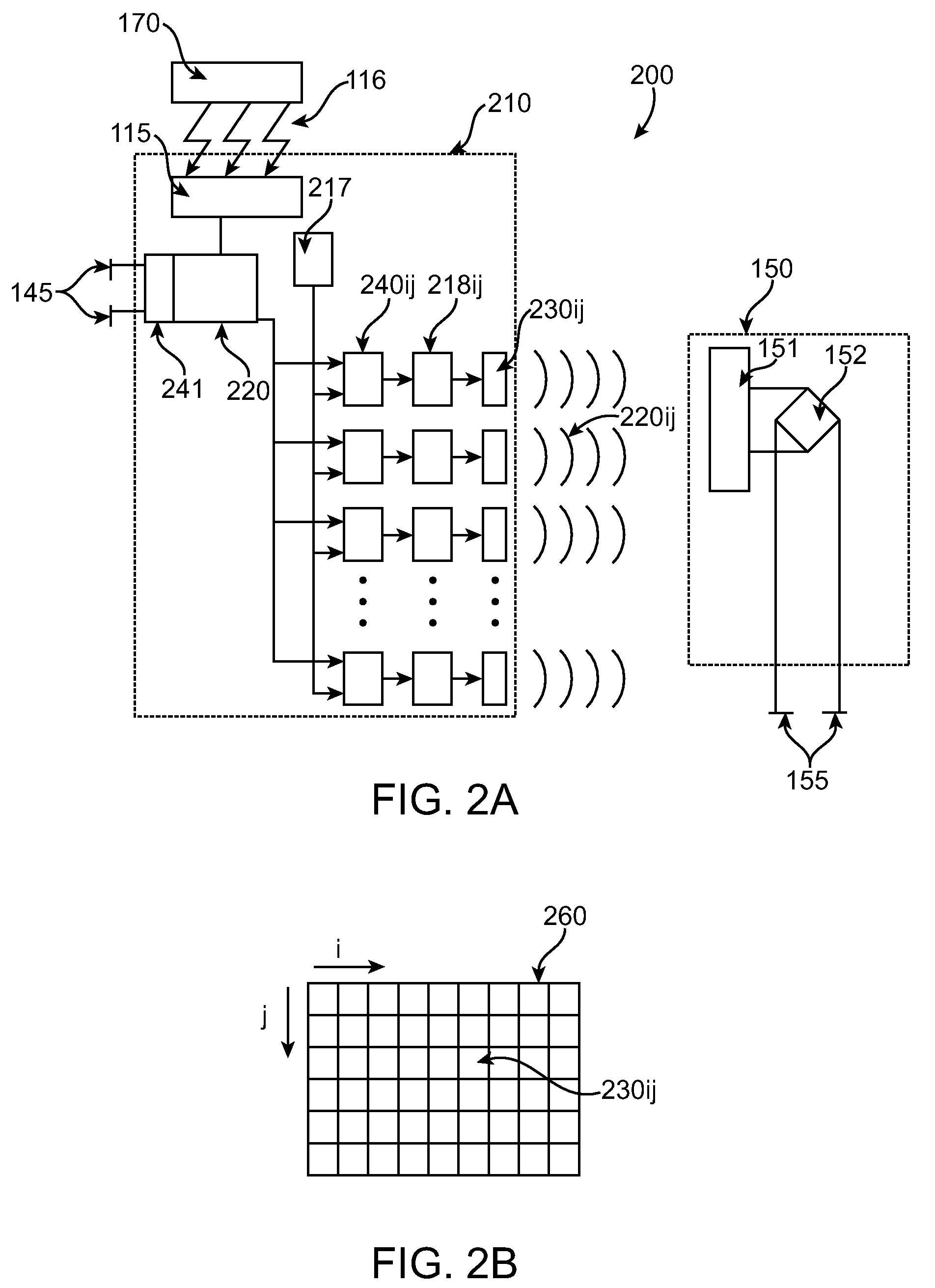Optimizing energy transmission in a leadless tissue stimulation system
a tissue stimulation and energy transmission technology, applied in the field of optimizing acoustic or ultrasound energy transmission and energy conversion in implantable devices, can solve problems such as inefficiency, and achieve the effects of efficient transmission of energy, efficient acoustic energy delivery, and improved system operation efficiency
- Summary
- Abstract
- Description
- Claims
- Application Information
AI Technical Summary
Benefits of technology
Problems solved by technology
Method used
Image
Examples
Embodiment Construction
[0027]A leadless tissue stimulation system is shown in FIG. 1 as system 100. An implantable or external controller-transmitter module 110 generates acoustic waves 120 of sufficient amplitude and frequency and for a duration and period such that the receiver-stimulator module 150 electrically stimulates tissue. An external programmer 170 wirelessly communicates with an implantable controller-transmitter module 110, typically by radio frequency telemetry means 116, to adjust operating parameters. The implantable controller-transmitter module comprises a telemetry receiver 115 for adjusting the transmit acoustic characteristics, control circuitry 140 and signal generator 117, a power amplifier 118, and an output transducer assembly 119 for generating the acoustic beam 120 transmitted to receiver-stimulator 150. Understandably, the controller-transmitter 110 transfers acoustic energy to the receiver-stimulator 150 leadlessly. Control circuitry 140 contains an electrical signal sensing c...
PUM
 Login to View More
Login to View More Abstract
Description
Claims
Application Information
 Login to View More
Login to View More - R&D
- Intellectual Property
- Life Sciences
- Materials
- Tech Scout
- Unparalleled Data Quality
- Higher Quality Content
- 60% Fewer Hallucinations
Browse by: Latest US Patents, China's latest patents, Technical Efficacy Thesaurus, Application Domain, Technology Topic, Popular Technical Reports.
© 2025 PatSnap. All rights reserved.Legal|Privacy policy|Modern Slavery Act Transparency Statement|Sitemap|About US| Contact US: help@patsnap.com



